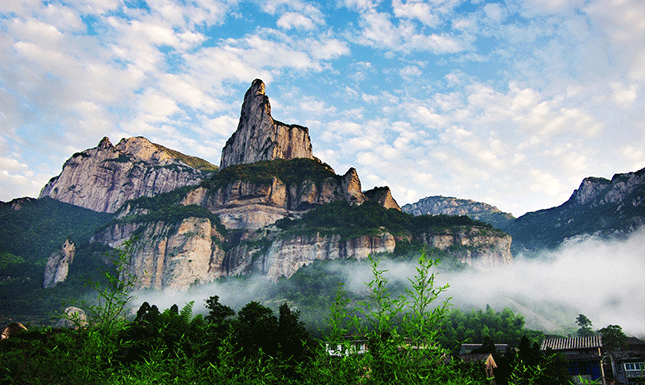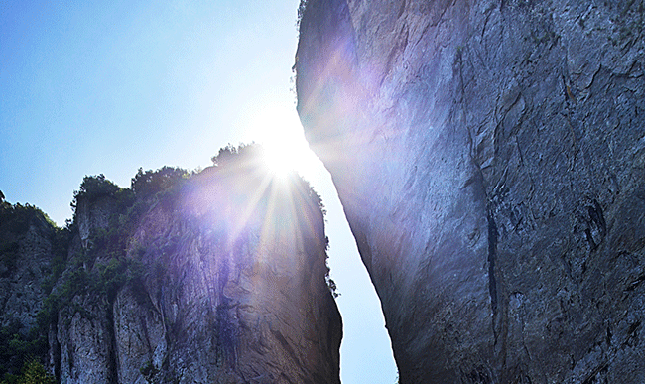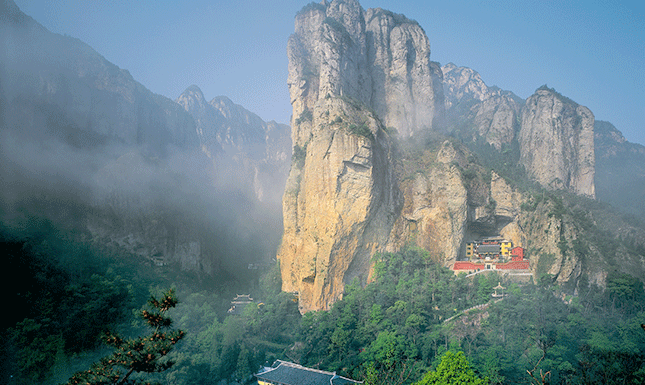



Yandang Mountain
Name in Chinese :雁荡山
 Opening Hours:05:30 - 18:00
Opening Hours:05:30 - 18:00 Admission Fee:the admission fee of scenic spots inside varies from 15 RMB to 108 RMB
Admission Fee:the admission fee of scenic spots inside varies from 15 RMB to 108 RMB Telephone:+86 577 62178888
Telephone:+86 577 62178888 Address:Leqing City, Wenzhou City
Address:Leqing City, Wenzhou City
Introduction
Located in Yueqing County of the Wenzhou City, Yandang Mountain is very famous in China for its marvelous landscapes, and is one of the China's top ten must-see scenic spot and also a National AAAAA Level scenic resort. There is a lake at the top of Yandang Mountain, and the environment is suitable for wild geese, many of which congregate there-the reason why it named “Yandang”.
The mountainous scenery of Yandang Mountain is unique and splendid – the peaks, waterfalls and caves, set it apart as the most important mountain in southeast China. In 2005, Yandang Mountain was given the status of global geo-park by UNESCO.
The pleasant outdoor environment, fresh mountain air, and cool stream water make for a great retreat for the summer months, and popular with visitors from home and abroad. Covering an area of 294.6 square kilometers, the place features volcanic rocks, deep valleys, precipitous peaks, mysterious caves, and strange rock formations. There are more than 500 scenic spots scattering the 8 major areas. The Spiritual Peaks, the Big Dragon Waterfall and the Spiritual Rocks are so exceptional and magnificent that they have shared the title of “the top spot in Yandang Mountain”.
The development of Yandang Mountain area started in the Northern and Southern Dynasty (420 AD-581AD), flourished in the Tang Dynasty (618 AD-907AD), and bloomed in the Song Dynasty (960 AD-1279AD). In the course of this evolution, the region has accumulated rich historical and cultural treasures. The unique and splendid mountainous scenery in the Yandang Mountain area has attracted a large number of monks and literati. There are 21 temples, 6 Taoist temples, 11 nunneries, 3 halls, 10 monasteries, 22 pavilions and other religious buildings located here.
Temples were built beneath steep peaks, and construction was done in harmony with caves and their ecosystems. Those particular buildings represent an integration of human cultural and natural structures. The decorated archways in Nange village and other historical relics and residential areas are still well-preserved in rural settlements in this area.
The mountainous area consists of the North Yandang Peak, the South Yandang Peak and the Middle Yandang Peak. In the northern Song Dynasty (960 AD-1127AD), scientist Shen Kuo (1031 AD-1095 AD) drew the conclusion that the flow of water had the effect of erosion terrain in the Yandang Mountain area. This theory about erosion was put forward more than 600 years before the Europeans proposed it. It is reported that Yandang Mountain was formed due to activity of a typical rhyolitic caldera complex, and came to be around 120 million years ago in the Cretaceous period. In addition to its cultural significance, the area also serves as an important place for studying the effect of volcanic activity during the Mesozoic Era.